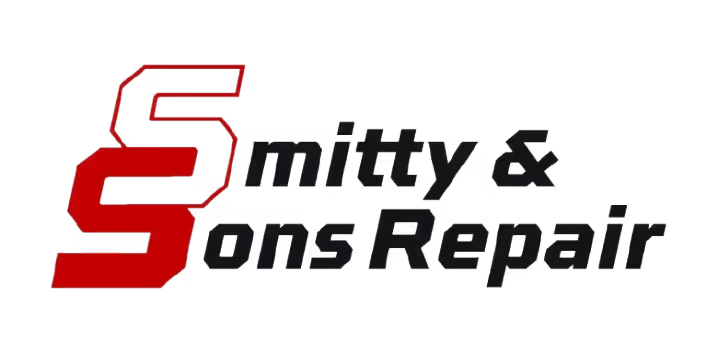DOT Inspection Myths: What Truck Drivers Get Wrong About Compliance

The U.S. Department of Transportation (DOT) inspection process plays a critical role in maintaining safety and regulatory compliance for commercial motor vehicles. Yet, misconceptions persist throughout the industry, leading to preventable violations, downtime, and financial penalties.
At Smitty & Sons Repair, we recognize the importance of keeping drivers and fleet operators informed. In this article, we’ll address and clarify several common DOT inspection myths, helping you ensure your vehicle remains compliant and operational.
Myth #1: “Passing last year’s inspection means I’ll pass again.”
A previous inspection report, no matter how recent, does not ensure future compliance. Equipment conditions can change quickly due to factors such as mileage, wear, and exposure to environmental elements. Critical systems like brakes, suspension components, and steering assemblies can deteriorate over time.
Fact: DOT inspectors evaluate your vehicle according to its current condition. Establishing a proactive preventive maintenance routine is the most effective way to ensure ongoing compliance.
Myth #2: “Only long-haul or fleet vehicles are subject to inspections.”
This misunderstanding is frequent, especially among local operators and owner-operators. DOT regulations are applicable to all commercial motor vehicles that exceed the minimum weight threshold of 10,001 lbs (GVWR), regardless of fleet size or distance operated.
Fact: If your vehicle meets the weight or cargo criteria for regulation, you are subject to DOT inspections, regardless of whether you are operating regionally or over long distances.
Myth #3: “If it’s not visible, it won’t be checked.”
Although inspectors assess the external appearance and lighting systems, DOT inspections involve more than just initial observations. They consistently examine under-vehicle parts, brake stroke measurements, air lines, suspension systems, and fluid leaks.
Fact: Inspections are comprehensive and involve internal systems that might not be visible during a standard walk-around. A clean exterior cannot make up for mechanical deficiencies.
Myth #4: “I’ll receive a warning before a DOT inspection.”
DOT inspections can occur without any advance notice. Roadside inspections are often conducted randomly or based on enforcement algorithms, such as the Inspection Selection System (ISS), which evaluates a carrier's safety performance.
Fact: Being prepared at all times is crucial. This includes maintaining current documentation, functional safety systems, and vehicles that meet mechanical standards.
Myth #5: “Only Level 1 inspections are important.”
Although Level 1 inspections are the most thorough, other inspection levels (Levels 2–6) are equally enforceable and can lead to citations or out-of-service orders. For instance, Level 3 inspections concentrate exclusively on driver credentials and records, which are often neglected.
Fact: Every inspection level can affect compliance ratings. Inadequate load securement, missing medical certifications, or faulty Electronic Logging Devices (ELDs) may all lead to violations, regardless of the inspection type.
Myth #6: “Inspectors are simply looking to issue fines.”
While enforcement is a part of their responsibility, DOT officers primarily focus on ensuring road safety. Citations and out-of-service orders are issued to address legitimate concerns rather than to penalize drivers unnecessarily.
Fact: Maintaining professionalism and demonstrating a commitment to safety during an inspection can lead to a more efficient process. Many violations can be prevented through regular inspections and comprehensive documentation checks.
Myth #7: “Minor defects won’t result in violations.”
Minor mechanical issues are often early indicators of larger problems. A missing segment of reflective tape, low air pressure, or worn tire tread may seem insignificant, but they are clearly defined in the FMCSA's out-of-service criteria.
Fact: Even minor deficiencies can result in violations. Attention to detail is essential, particularly in areas such as lighting, brake adjustment, windshield visibility, and marker lamps.
Myth #8: “If I wasn’t aware of the issue, I can’t be held responsible.”
Responsibility for the vehicle's condition rests with the driver and/or fleet operator. The DOT regulations require daily pre-trip and post-trip inspections, which must be properly documented. Neglecting an issue, whether intentionally or unintentionally, does not remove liability.
Fact: Ignoring a defect is not a valid defense. Comprehensive inspections and proper documentation are crucial for ensuring legal compliance and maintaining road safety.
Myth #9: “Inspections are unlikely in smaller markets like Lewiston.”
While some believe inspections are more common in high-traffic corridors, rural and mid-sized markets, such as Lewiston, ID, continue to experience regular enforcement activity. Mobile inspection units and weigh stations function across Idaho and neighbouring states.
Fact: DOT compliance is enforced across the country. Operators in smaller markets are not exempt from roadside inspections or compliance reviews.
Myth #10: “All inspections and repairs can be handled in-house.”
While many drivers can perform routine checks, diagnosing and fixing compliance-critical issues, such as brake imbalance, ABS malfunctions, or suspension damage, often requires specialized training and diagnostic tools.
Fact: Partnering with a certified diesel repair shop guarantees that inspections are conducted thoroughly and that repairs meet DOT standards.
Compliance Begins with Accurate Information
Navigating DOT regulations and inspection protocols requires a factual understanding and consistent application of best practices. Relying on outdated assumptions or hearsay places your operation at risk, both in terms of safety and profitability.
Staying informed, prepared, and proactive is the best way to minimize violations, reduce downtime, and uphold a strong safety rating.
Ensure DOT Readiness with Professional Support
At Smitty & Sons Repair in Lewiston, ID, our technicians deliver comprehensive DOT readiness assessments, mock inspections, and preventive maintenance specifically designed for heavy-duty commercial vehicles.
We assist in identifying and correcting compliance issues before they lead to violations—saving you time, money, and operational headaches.
